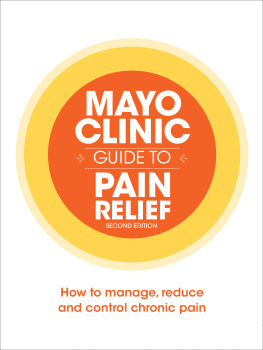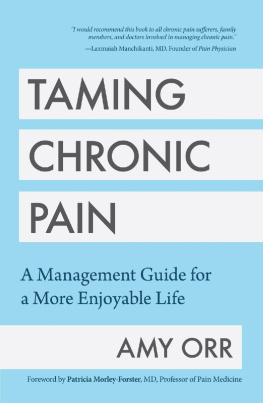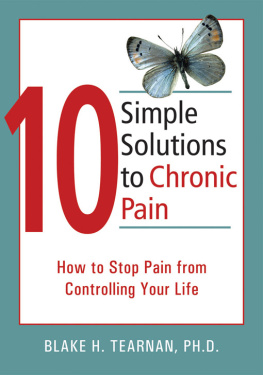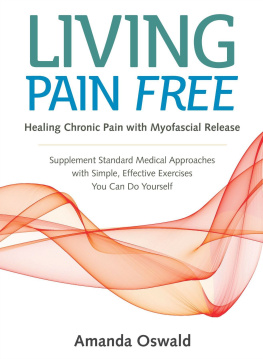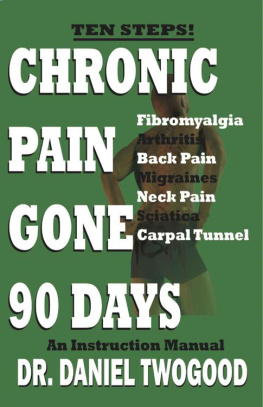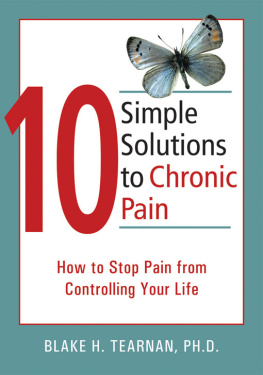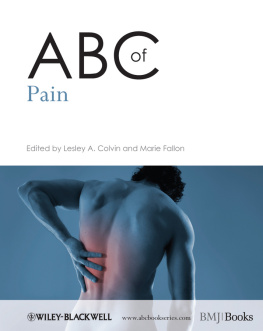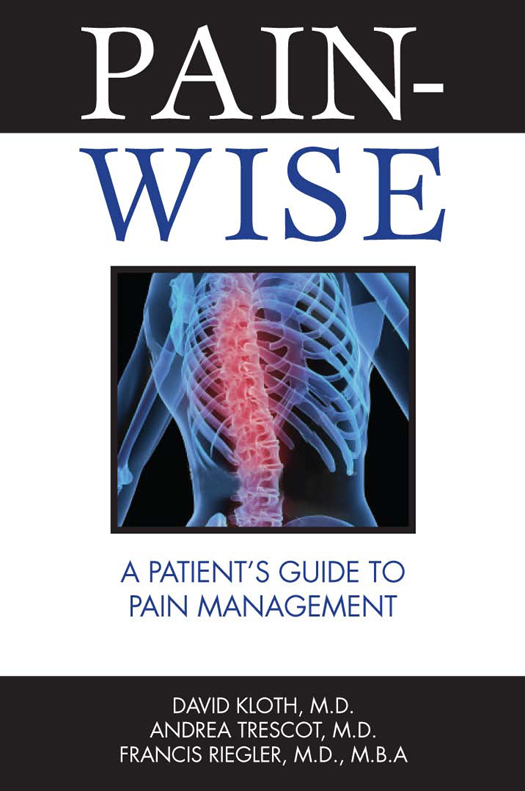Pain-Wise
Text Copyright 2011 David Kloth, M.D., Andrea Trescot, M.D. and Francis Riegler, M.D.
All rights reserved. No part of this book may be reproduced, stored in a retrieval system, or transmitted, in any form or by any means, electronic or otherwise, without written permission from the Publisher.
Hatherleigh Press is committed to preserving and protecting the natural resources of the Earth. Environmentally responsible and sustainable practices are embraced within the companys mission statement.
Hatherleigh Press is a member of the Publishers Earth Alliance, committed to preserving and protecting the natural resources of the planet while developing a sustainable business model for the book publishing industry.
This book was edited and designed in the village of Hobart, New York. Hobart is a community that has embraced books and publishing as a component of its livelihood. There are several unique bookstores in the village. For more information, please visit www.hobartbookvillage.com.
Library of Congress Cataloging-in-Publication Data is available.
eISBN: 978-1-57826-410-0
Cover design by Nick Macagnone
Interior design by Nick Macagnone

v3.1
TABLE OF CONTENTS
INTRODUCTION
S o youve picked up this book, which likely means one of two things: either you are suffering from a condition that is causing chronic pain, or you are trying to understand the pain of a friend or loved one. We understand, and were here to help. Pain management is one of the most misunderstood specialties, and it means many different things to different people. No doubt your head is swimming with all the treatment options being thrown at you. With so many options to choose from, you are probably wondering what exactly pain management is.
Pain management is a subspecialty of many different kinds of doctors. You can walk into the office of a doctor who promotes himself or herself as a pain management physician and see a psychiatrist, a physiatrist, a surgeon, an anesthesiologist, a chiropractor, an acupuncturist, or a variety of other physicians. In todays world, all of these different types of physicians may call themselves pain management doctors, and so this wont differentiate them from the more highly skilled and trained physicians who practice the subspecialty of interventional pain management (IPM). Interventional pain physicians are experts at diagnosing and then treating chronic pain conditions using precision-guided injections or minimally invasive therapies. The types of physicians that may perform interventional pain management most commonly include anesthesiologists and physiatrists, but interventional pain management treatments are also performed by many other specialists, including radiologists, neurologists, neurosurgeons, orthopedists, and general practitioners. In some areas, a nurse practitioner or a physician assistant may perform these procedures (a practice which deeply concerns the authors of this book).
The complexity of different treatments and multitude of providers means that there is a great deal of variability in the level of training and quality of care. A patient, therefore, must become an active participant in his or her own care. You must be knowledgeable about your choices. Finding a doctor who will meet your needs and expectations requires at least as much research as buying a car. You wouldnt walk into a car dealership without knowing what kind of car you needed, what a reasonable price might be for that car, and what you should expect from your new vehicle. In the same way, you should walk into a pain management office knowing what type of doctor youre seeing, what his or her qualifications are, and what type of treatment you can expect. It is important that you understand the differences among providers so you can select the type of physician to best treat your particular pain problem.
The authors of this book strongly believe that the practice of interventional pain management is the practice of medicine and must only be performed by properly trained physicians and never by an independently practicing nurse or physician assistant. Interventional pain management physicians require extensive training to become proficient; the procedures are complex and can be very risky if not performed properly, so it is necessary that the physician has the proper background and training. The advice offered in this book comes from physicians who are actively practicing interventional pain management doctors. Interventional pain management is a specialty that focuses on determining the cause of symptoms and applying treatment options to manage and alleviate chronic pain. We are not simply generic pain management doctors. Interventional pain management physicians have a specific skill set, which will be explained in detail as this book progresses. We hope that this book will assist you in differentiating between the various interventional pain therapies and help guide you in both selecting a physician and learning about the various treatment options available today.
This book will begin with the basics and will then move to more complex concepts and treatments as it progresses. We have tried to include the more common treatments used today, but by no means is this meant to represent all possible therapies that are available. While we encourage you to read the whole book, please at least review the initial chapters which discuss important concepts that are relevant to all conditions (you may wish to use other parts of the book more as a reference). We encourage you to refer back to this book as you progress with treatment as we believe that you will find it to be a valuable resource as you work with your doctor to improve your pain and function.
Note:
All Glossary terms are marked in bold throughout the text for easy reference.
CHAPTER 1
A BRIEF HISTORY
OF PAIN MEDICINE
P ain management or pain medicine is the branch of medicine devoted to the relief of pain and to improving the function and quality of life for those patients living in chronic pain. Although pain is a condition suffered by all creatures, the medical specialty of pain management is surprisingly new.
Perhaps the earliest reference to pain intervention is described in the book of Genesis in the Bible when God put Adam into a deep sleep in order to remove his rib to make Eve. Ancient cultures were well aware of the pain-relieving properties of plants; Egyptian papyrus records from 3000 BC described the use of poppy juice (opium) to treat pain. Chinese and other Eastern cultures identified pain points throughout the body and ultimately developed acupuncture therapy. Early Greek philosophers such as Plato recognized that the brain was the site of pain perception and showed its connection to the peripheral nervous system. In 1170 AD, the first book of Western surgery provides descriptions of sponges soaked in opium held over the patients nose for surgical pain relief. Morphine was isolated from opium in 1806, the needle and syringe for hypodermic injections were developed in 1839, and ether was first used in 1846 to provide pain relief during surgery.


